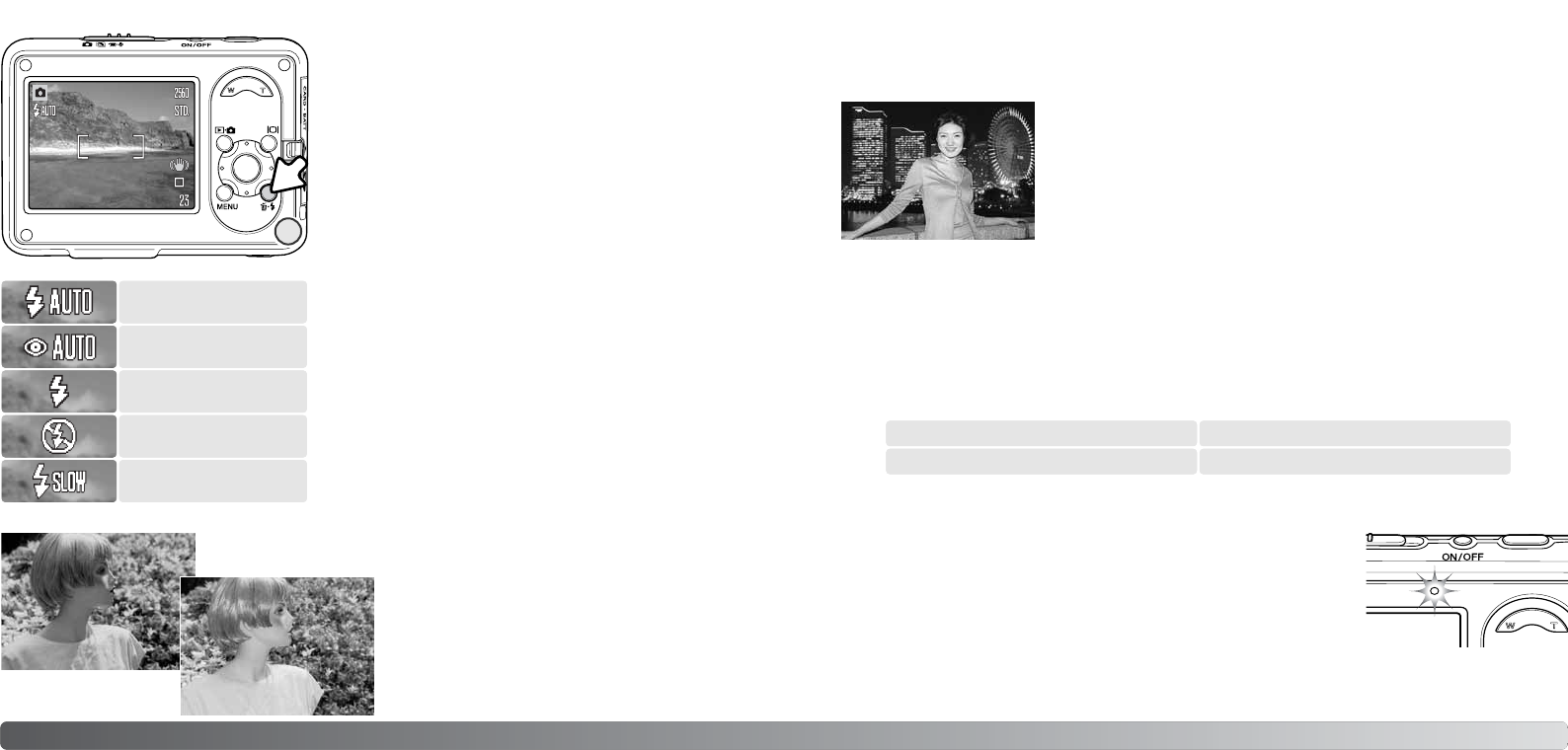
2928 Recording - basic operation
FLASH MODES
The flash can be used when taking still images. To
select the flash mode, press the flash button (1) on the
back of the camera until the desired mode is displayed.
The active flash mode is displayed in the top left corner
of the LCD monitor. When the camera is turned off and
auto reset (p. 76) is active, the flash mode is reset to
autoflash with red-eye reduction if this mode was last
used, if not the mode will be reset to autoflash. While
the flash is charging, the shutter cannot be released.
Autoflash - the flash fires automatically in low-light and
backlit conditions.
Red-eye reduction - the flash fires multiple bursts
before the main flash burst to reduce red-eye; an effect
caused by light reflected from the retina. Use in low-
light conditions when taking photographs of people or
animals, the pre-flashes contract the pupils of the sub-
ject’s eyes.
Fill flash - the flash fires with each exposure regardless
of the amount of ambient light. Fill flash can be used to
reduce harsh shadows caused by strong direct light or
sunshine.
Flash cancel
Autoflash with
red-eye reduction
Fill-flash
Autoflash
Fill flash
1
Slow-sync.
FLASH RANGE - AUTOMATIC OPERATION
The camera automatically controls the flash output. For well-exposed images, the subject must be
within the flash range. Because of the optical system, the flash range is not the same at the lens’
wide-angle position as it is at the telephoto position. The flash range can be changed with camera
sensitivity (ISO), see page 49.
FLASH SIGNALS
The indicator lamp above the LCD monitor indicates the status of the
flash. When the lamp blinks, the flash is charging and the shutter will
not release.
Wide-angle position Telephoto position
0.3m ~ 2.2m (1.0 ft. ~ 7.2 ft.) 0.4m ~ 2.1m (1.3 ft. ~ 6.9 ft.)
Flash cancel - the flash will not fire. Use flash cancel when flash pho-
tography is prohibited, natural light is desired to illuminate the subject,
or the subject is beyond the flash range. The camera-shake warning
may appear when flash cancel is selected (p. 30).
Slow sync. - for portraits in low light when the background detail is
wanted. Red-eye reduction is active. The camera balances the sub-
ject and background exposures. The use of a tripod is recommended.
Ask your subjects not to move after the main burst; the shutter may
still be open for the background exposure.


















